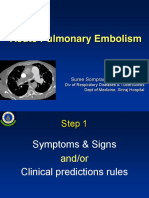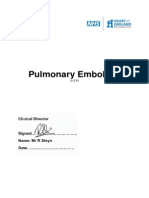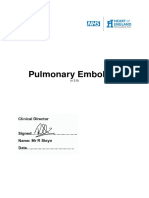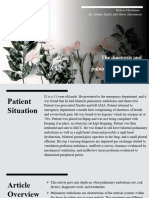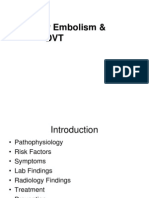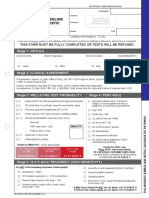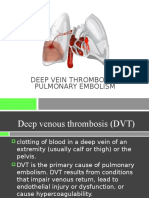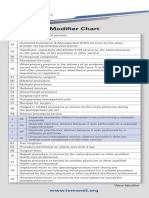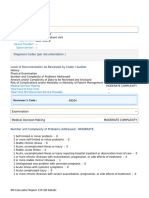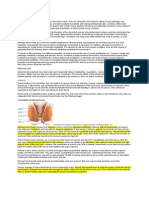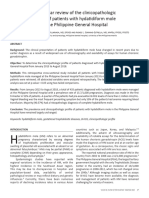0% found this document useful (0 votes)
184 views4 pagesEmbolism Report
The document provides a comprehensive guide for validating acute embolism diagnoses, detailing steps for assessment, symptom identification, treatment documentation, and compliance with coding guidelines. It emphasizes the importance of confirming active embolism status through clinical evidence and proper documentation. Additionally, it outlines specific considerations for hospital and ambulatory settings, ensuring accurate coding and risk adjustment for embolism cases.
Uploaded by
chaitanya varmaCopyright
© © All Rights Reserved
We take content rights seriously. If you suspect this is your content, claim it here.
Available Formats
Download as DOCX, PDF, TXT or read online on Scribd
0% found this document useful (0 votes)
184 views4 pagesEmbolism Report
The document provides a comprehensive guide for validating acute embolism diagnoses, detailing steps for assessment, symptom identification, treatment documentation, and compliance with coding guidelines. It emphasizes the importance of confirming active embolism status through clinical evidence and proper documentation. Additionally, it outlines specific considerations for hospital and ambulatory settings, ensuring accurate coding and risk adjustment for embolism cases.
Uploaded by
chaitanya varmaCopyright
© © All Rights Reserved
We take content rights seriously. If you suspect this is your content, claim it here.
Available Formats
Download as DOCX, PDF, TXT or read online on Scribd
/ 4



